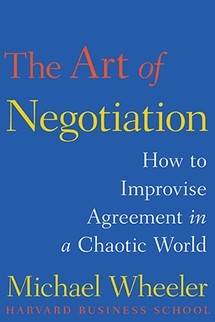What You Want: To negotiate better
What to try: Flashing forward
When we're trying to work a deal—be it with a contractor redoing the
house or a neighbor who wants to split a new power mower—we usually
think of what might go wrong. We may even name a few ideas (such as, the
contractor might go overbudget or the neighbor might forget to fill up
the mower with gas). But that is not enough, writes Harvard Business
School professor Michael Wheeler in
The Art of Negotiation: How to Improvise Agreement in a Chaotic World.
Instead, pretend the negotiation has started. Now imagine there's been a
major problem. Ask yourself, "What will it be?"(maybe the contractor
wants to install a $700 toilet instead of a $100 one, for example).
Rather than having a fuzzy idea of something that might go south, you're
now
assuming something will, which fosters "an attitude of
watchfulness, so you'll be quicker to see if/when the process is going
awry. If you're alert, you may be able to put it back on track. If not,
you'll have a plan B."
Now flash forward again. This time imagine that there's been some sort
of wonderful surprise in your talks. What is it? "Studies show that
negotiators who set lofty goals get better deals," writes Wheeler, who
also edits the
Negotiation Journal
at Harvard Law School. "Instead of contenting themselves with outcomes
they can live with, these negotiators focus instead on how much the
other party might be prepared to grant. In addition, imagining upside
scenarios prepare you to recognize opportunities and find creative
solutions."


